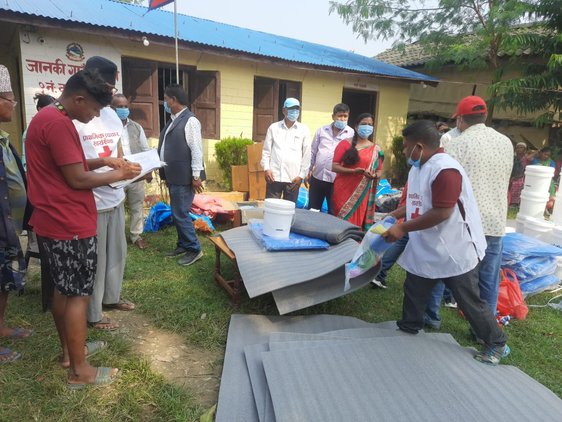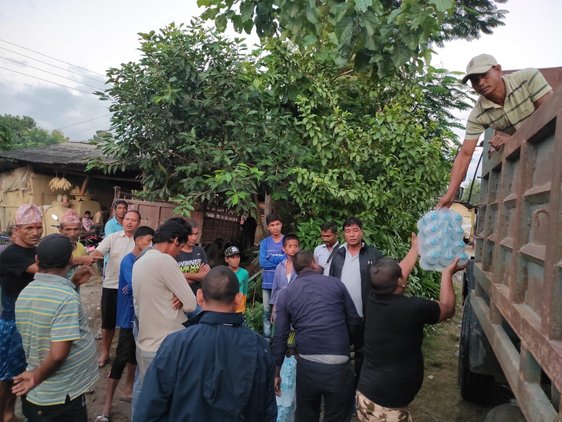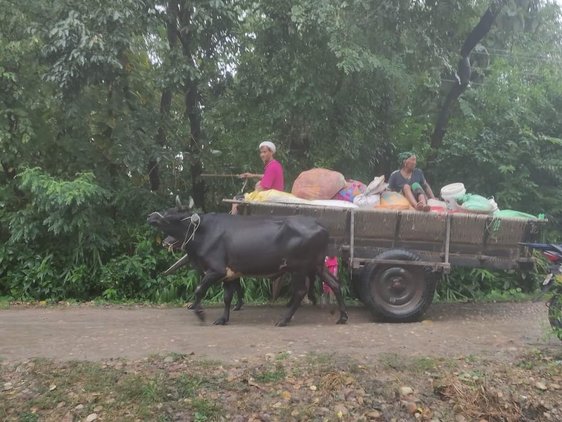A new case study on anticipatory action ahead of the October 2021 floods in the Karnali River, Nepal
In 2020, the Nepal Red Cross Society started working on forecast-based action and shock-responsive social protection (FbA-SRSP) for floods and cold waves. The FbA mechanism comprises impact thresholds, triggers, vulnerability indicators and an early action matrix, which was jointly developed with the local government and finalized in July 2021.
The mechanism covers five high-risk municipalities in the Karnali and Babai river basins, which are in Kailali and Bardiya districts. If a flood is forecast, the matrix guides the Nepal Red Cross Society and local authorities in taking pre-agreed early actions. It also defines the roles and responsibilities of various line agencies at different levels of governance. This work was undertaken with financial support from the EU Civil Protection and Humanitarian Aid Operations, and technical support from Danish Red Cross, the Red Cross Red Crescent Climate Centre and Handicap International.
In October 2021, Nepal was hit by extreme unseasonal rainfall. Tikapur and Janaki, two of the target municipalities in Kailali district, were affected by flooding. A new case study documents the timeline of anticipatory action for this event, including forecasting, communication and coordination processes and the early actions taken.
The initial trigger for anticipatory action considered various factors, including water levels, the flood-return period and the possibility of the flood return. Based on the lessons from this experience, the trigger threshold has been revised. Now, it also considers rainfall levels. The threshold for the likelihood of the flood-return period has also been increased, from 50 per cent to 70 per cent, while the return period has been decreased from five years to two, for both the Karnali and Babai rivers.
A pilot of pre-identified early actions, which took place during the October 2021 floods, also established the most suitable approaches and conditions for an early response. These include the distribution of ready-to-eat food and safe drinking water, and providing multipurpose cash top-ups that use the existing national programme for social security allowance. These actions can now be taken ahead of future flooding events, based on the proof of concept provided by this experience.
The evidence from this case study will inform advocacy initiatives, which will focus on ensuring that the local, provincial and federal governments recognize the benefits of anticipatory action in a time of climate crisis, and see that using Nepal’s social protection programme allows for timely, cost-effective early actions and responses. This advocacy should eventually support the integration of this approach into relevant policies, guidelines, and overall preparedness and response mechanisms.

Anticipatory action ahead of floods in Nepal. © Nepal Red Cross Society

Evacuation in Kailali, Nepal. © Nepal Red Cross Society

Early evacuation in Rajapur, Bardiya. © Nepal Red Cross Society

Anticipatory action ahead of floods in Nepal. © Nepal Red Cross Society
Evacuation in Kailali, Nepal. © Nepal Red Cross Society
Early evacuation in Rajapur, Bardiya. © Nepal Red Cross Society
This article was written by Alina Karki, senior documentation officer, Danish Red Cross.
The case study provides full details of the timeline for this early action.
